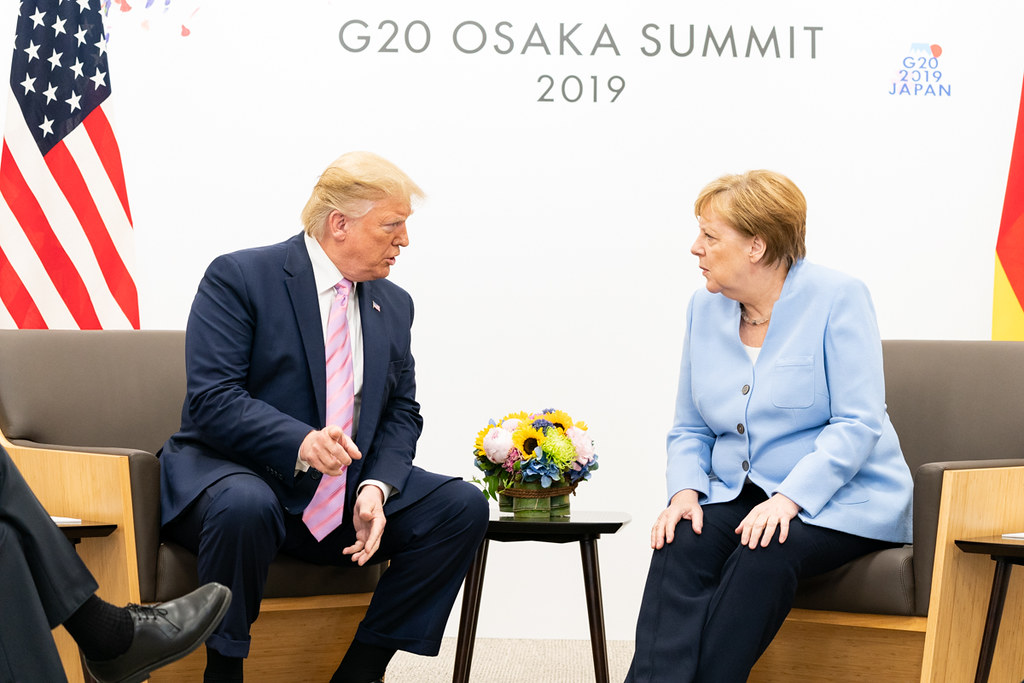Trump, Congress and Presidential Alliance Powers
In a new Washington Quarterly article titled “Presidential Alliance Powers,” we wrestle with a subject that has become familiar in these pages: the chief executive’s ability to dismantle American alliances. We argue that although many Trump foreign policy critics worry that his disdain for American alliances such as NATO might lead him to withdraw the United States, the more subtle, probable and already-manifest danger is that he weakens U.S. alliances from within.

Published by The Lawfare Institute
in Cooperation With

In a new Washington Quarterly article titled “Presidential Alliance Powers,” we wrestle with a subject that has become familiar in these pages: the chief executive’s ability to dismantle American alliances. We argue that although many Trump foreign policy critics worry that his disdain for American alliances such as NATO might lead him to withdraw the United States, the more subtle, probable and already-manifest danger is that he weakens U.S. alliances from within. We argue that, over the past 70 years, presidential alliance powers have expanded through a somewhat-recursive process that was intended to allow for studious alliance management by the executive.
The president now wields vast powers to manage American treaty commitments, and he can therefore sabotage them through action and inaction alike.The president’s Article II powers have granted him considerable leeway in the management of foreign affairs since the birth of the Republic, but the country’s postwar alliance system has expanded them further. Alliance treaties needed Senate approval to enter into force initially, but once active, they invited relatively little congressional scrutiny and, indeed, granted the executive entirely new realms of discretion. As we observe:
There is no small irony in the fact that the president appears to have such vast power to subvert alliances, because throughout much postwar history, expansive presidential powers were often justified as critical to effectuating U.S. alliance commitments…. Once mutual defense treaties entered into force ... their management became largely the domain of presidential unilateralism in military affairs—and, over time, even featured heavily in justifications for what historian Arthur Schlesinger Jr. famously labeled the greatly aggrandized “imperial presidency.” But if alliances helped strengthen the imperial presidency, the imperial presidency now threatens alliances.
Through the creation of new alliance relationships, institutions and commitments, the dominion of executive authority continued to expand with considerable bipartisan support, based largely in the belief that careful and swift alliance management required it. Whereas the practice of unilateral presidential war powers tends to garner much more attention (especially these days regarding Iran), the unilateral exercise of presidential alliance powers can also greatly affect the potential for conflict:
Some of the president’s constitutional powers relevant to alliances—such as the power to direct military operations in war and to appoint ambassadors (subject to Senate confirmation)—have always been clear. Starting in the early Cold War, though, the centrality of alliances to U.S. foreign policy contributed to the vast accumulation of additional presidential powers—some of them delegated by Congress and others established through executive branch practice over time. After nearly 70 years, presidential authority over the United States’ security guarantees now appears to be almost entirely unilateral.
The president can also reduce or end troop commitments, undermine guarantees through credibility-quashing statements or inaction and even withdraw the United States entirely from alliance commitments. The congressional authority, once bequeathed to the executive in the name of alliance maintenance, therefore, can now easily be used to undermine them from within.
We conclude the piece with recommendations for how Congress should protect U.S. alliances against erosion by presidential action or inaction by acting as a guardrail on malpractice. Congress can set advanced limits on potentially pernicious executive action, use its oversight authority to shed light on destructive behavior through hearings and investigations as well as to make the positive case for alliances, use the budget to draw red lines, and even conduct its own diplomacy to counteract presidential damage. (Our thinking builds on great work by other Lawfare writers, including here, here, here, here and here.) Though Congress is not practiced in exercising powers for this purpose, there are specific steps it can take to impede the president’s hollowing out of alliances—at least if public support for those pacts remains strong.




